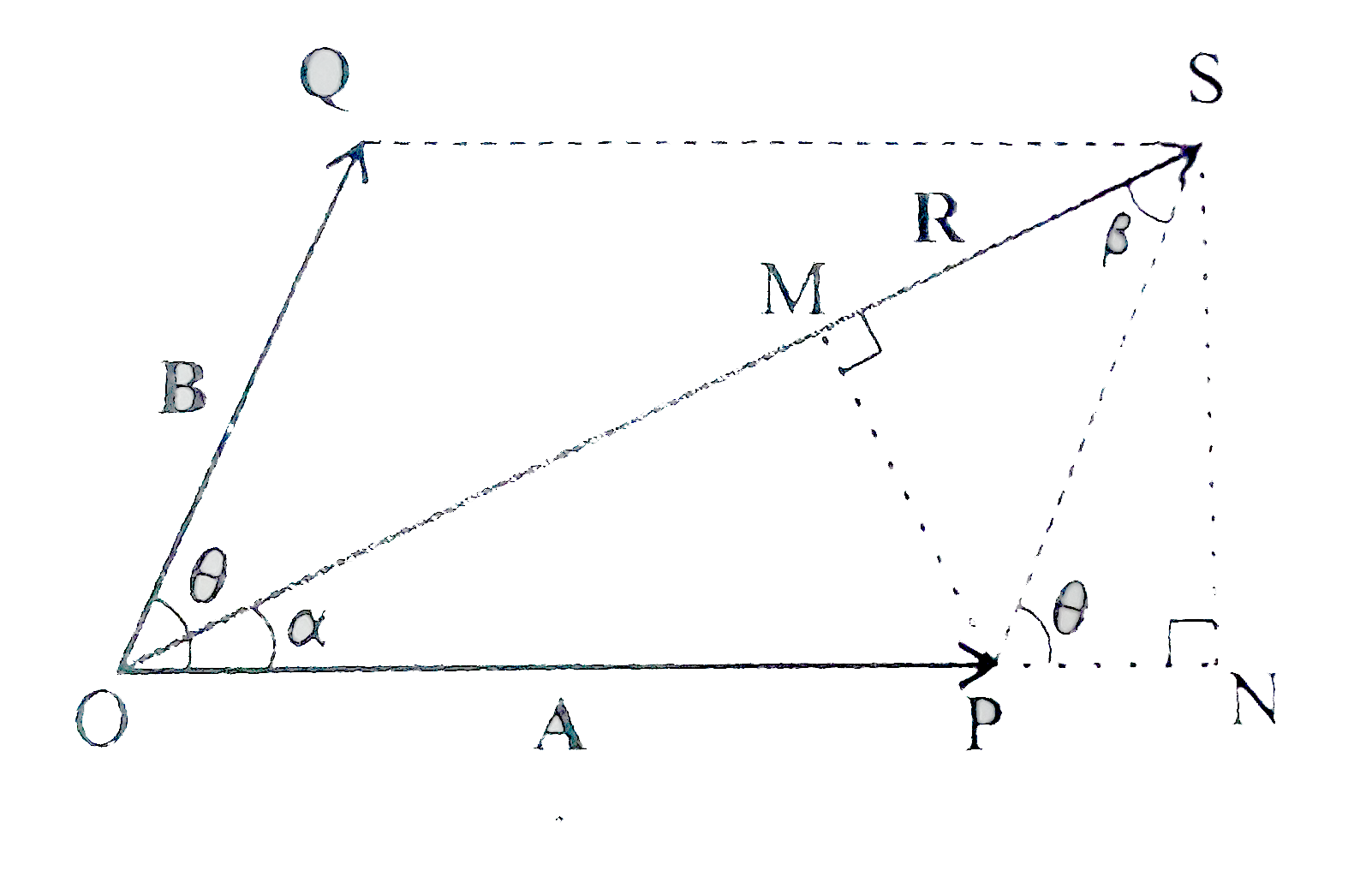Find the magnitude and direction of the resultant of two vectors A and B in the terms of their magnitudes and angle between them.

Let OP and OQ represent the two vectors A and B making an angle . Then, using the parallelogram method of vector addition, OS represents the resultant vector R.
R= A+B
SN is normal to OP and OP and PM is normal to OS.
From the geometry of the figure.
but ON = OP + PN = A + Bcos
SN = B
or, .............(4.24a)
In OSN, SN= OS, and in PSN, SN= PS
Therefore,
or, ................(4.24b)
Similarly,
PM= A
or ............(4.24c)
Combining Eqs. we get,
................(4.24d)
Using Eqs, we get
...............(4.24 e)
Where R is given by Eq.
or ...............(4.24f)
Eqs. (4.24a) givestjhe magnitude of the resultant and Eqs. (4.24e) and (4.24f) its direction. Equation (4.24a) is known as the law of cosines and Eq. (4.24d) as the law of sines.
Topper's Solved these Questions
- MOTION IN A PLANE Book:NCERTChapter:MOTION IN A PLANE Exercise:EXERCISE
Explore 32 Videos
- MECHANICAL PROPERTIES OF SOLIDSBook:NCERTChapter:MECHANICAL PROPERTIES OF SOLIDSExercise:EXERCISE
Explore 21 Videos
- MOTION IN A STRAIGHT LINEBook:NCERTChapter:MOTION IN A STRAIGHT LINEExercise:EXERCISE
Explore 28 Videos
Similar Questions
The resultant of two vector A and B is at right angles to A and its magnitude is half of B. Find the angle between A and B.
View SolutionFind the magnitude of each of the two vectors →a and →b having the same magnitude such that the angle between them is 60∘ and their scalar product is 9/2.
View Solution
Knowledge Check
The resultant of two vectors of same magnitude is equal to the magnitude of one of the vectors, then the angle between them is
A30∘B60∘C90∘D120∘Resultant of two vector of equal magnitude A is
A√3Aat60∘B√2Aat90∘C2Aat120∘DAat180∘Square of the resultant of two forces of equal magnitude is equal to three times the product of their magnitude. The angle between them is
A0∘B45∘C60∘D90∘
The magnitude of the resultant of two vectors of magnitudes 5 and 3 is 2. What is the angle between the two vectors ?
View SolutionSquare of the resultant of two forces of equal magnitude is equal to three times the product of their magnitude. The angle between them is :
View SolutionSquare of the resultant of two forces of equal magnitude is equal to three times the product of their magnitude. The angle between them is
View SolutionTwo vectors under vector multiplication have magnitude one, if angle between them is of
View SolutionTwo unit vectors under vector multiplication have magnitude one if angle between them is of
View Solution

